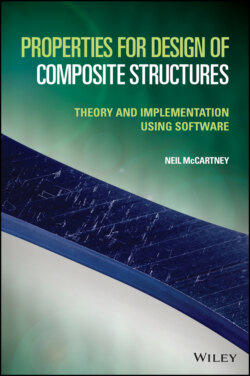Читать книгу Properties for Design of Composite Structures - Neil McCartney - Страница 61
4.2 General Description of Maxwell’s Methodology Applied to Thermal Conductivity
ОглавлениеConsider an isolated cluster of parallel fibre reinforcements, embedded in an isotropic infinite matrix, as shown in Figure 4.1(a). There are N different reinforcement types such that for i = 1, …, N, there are ni cylindrical fibres of radius ai. The properties and geometry of the fibres of type i, that may differ from those of other types, are denoted by a superscript i. The cluster of all types of fibre is just enclosed by a cylinder of radius b and the parallel fibre distribution is sufficiently homogeneous for it to lead to transverse isotropic properties for the composite formed by the cluster of fibres and the matrix lying within this cylinder as shown in Figure 4.1(b). The volume fraction of fibres of type i within the cylinder of radius b is given by
Figure 4.1 (a) Discrete fibre model and (b) smoothed effective medium model of a fibre-reinforced composite embedded in infinite matrix material.
(4.1)
where Vm is the corresponding volume fraction of matrix.
If there is only one type of fibre, and there are n fibres of radius a within the cylinder of radius b, then the fibre volume fraction of the composite is denoted by Vf such that
(4.2)
It should be noted that by selecting all fibres to have the same properties but different sizes, composites having only a statistical distribution of fibre sizes can be considered. Similarly, by selecting all fibres to have the same size but different properties, composites having only a statistical distribution of properties can be considered. Clearly composites having statistical distributions of both size and properties can also be considered.
